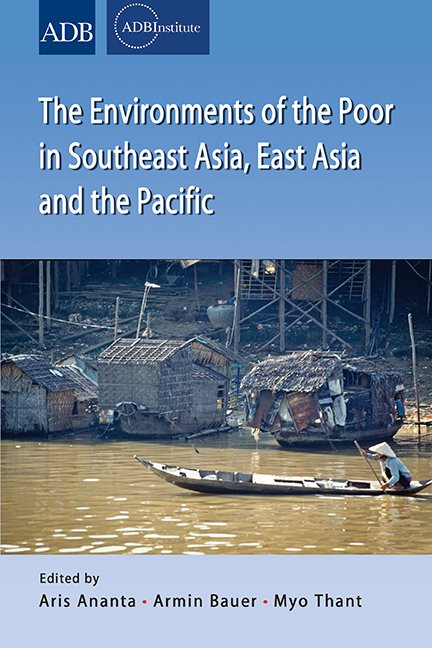Book contents
- Frontmatter
- Contents
- Preface
- List of Contributors
- Part I OVERVIEW
- Part II EAST ASIA (People's Republic of China and Republic of Korea)
- Part III PACIFIC ISLANDS
- 7 Climate Change Adaptation and Poverty Reduction in Small Islands of the Pacific
- 8 The Role of Development Organizations in Pro-Poor Adaptation to Global Warming in the Pacific Islands
- Part IV MAINLAND SOUTHEAST ASIA (Cambodia, Thailand, Vietnam)
- Part V ARCHIPELAGIC SOUTHEAST ASIA (Indonesia, Malaysia, Philippines)
7 - Climate Change Adaptation and Poverty Reduction in Small Islands of the Pacific
from Part III - PACIFIC ISLANDS
Published online by Cambridge University Press: 21 October 2015
- Frontmatter
- Contents
- Preface
- List of Contributors
- Part I OVERVIEW
- Part II EAST ASIA (People's Republic of China and Republic of Korea)
- Part III PACIFIC ISLANDS
- 7 Climate Change Adaptation and Poverty Reduction in Small Islands of the Pacific
- 8 The Role of Development Organizations in Pro-Poor Adaptation to Global Warming in the Pacific Islands
- Part IV MAINLAND SOUTHEAST ASIA (Cambodia, Thailand, Vietnam)
- Part V ARCHIPELAGIC SOUTHEAST ASIA (Indonesia, Malaysia, Philippines)
Summary
Due to their small size, Pacific Island countries are susceptible to the effects of climate change. The Pacific Island countries are likely to suffer in five areas. The first is their coastal protection, including their mangroves, reefs, mudflats, and sea grass beds. The second is their climate regulation, covering seasonal and decadal cycles (e.g., El Niño) and long-term processes such as oceans as heat and carbon sinks. Third is their environmental flows, involving river and floodplain services, livelihoods, soil fertility, and sediment deposition. Fourth is their biodiversity conservation, covering reefs, the deep sea, polar ecosystem, shelf seas, mangroves, floodplains, and ancient lakes. Fifth is the cultural services concerning coastal heritage, identity and spirituality, education and knowledge, aesthetic enjoyment, food, and culture.
Furthermore, the Pacific Island countries rely heavily on imported food. Every Pacific Island country imports most (70–100 per cent) of its food. Increasing food prices are making it more difficult to import food. More and more of gross domestic products (GDP) is devoted to food import. And local food production, both marine and terrestrial, is threatened by the rising temperature of sea water and soil salinization, both of which are caused by climate change, which has become the greatest challenge facing the world since the beginning of the twenty- first century.
In their effort to address these challenges, the Pacific Island countries have embraced sustainable development as a pathway for the future by becoming a party to various international, regional and national agreements. Preparedness is a concern in every small island country in the Pacific. In this essay we show some of the ways Pacific Island countries are adapting to climate change, especially for the poor.
EFFECTS OF CLIMATE CHANGE
Fisheries
The Pacific Island countries rely heavily on the oceans for food (fish, sea shells, sea grass, and others). With a rise in the temperature of sea water, an effect is seen on food supply. Since most populations are living in the coastal areas, this has a major effect on their livelihoods.
- Type
- Chapter
- Information
- Publisher: ISEAS–Yusof Ishak InstitutePrint publication year: 2013



